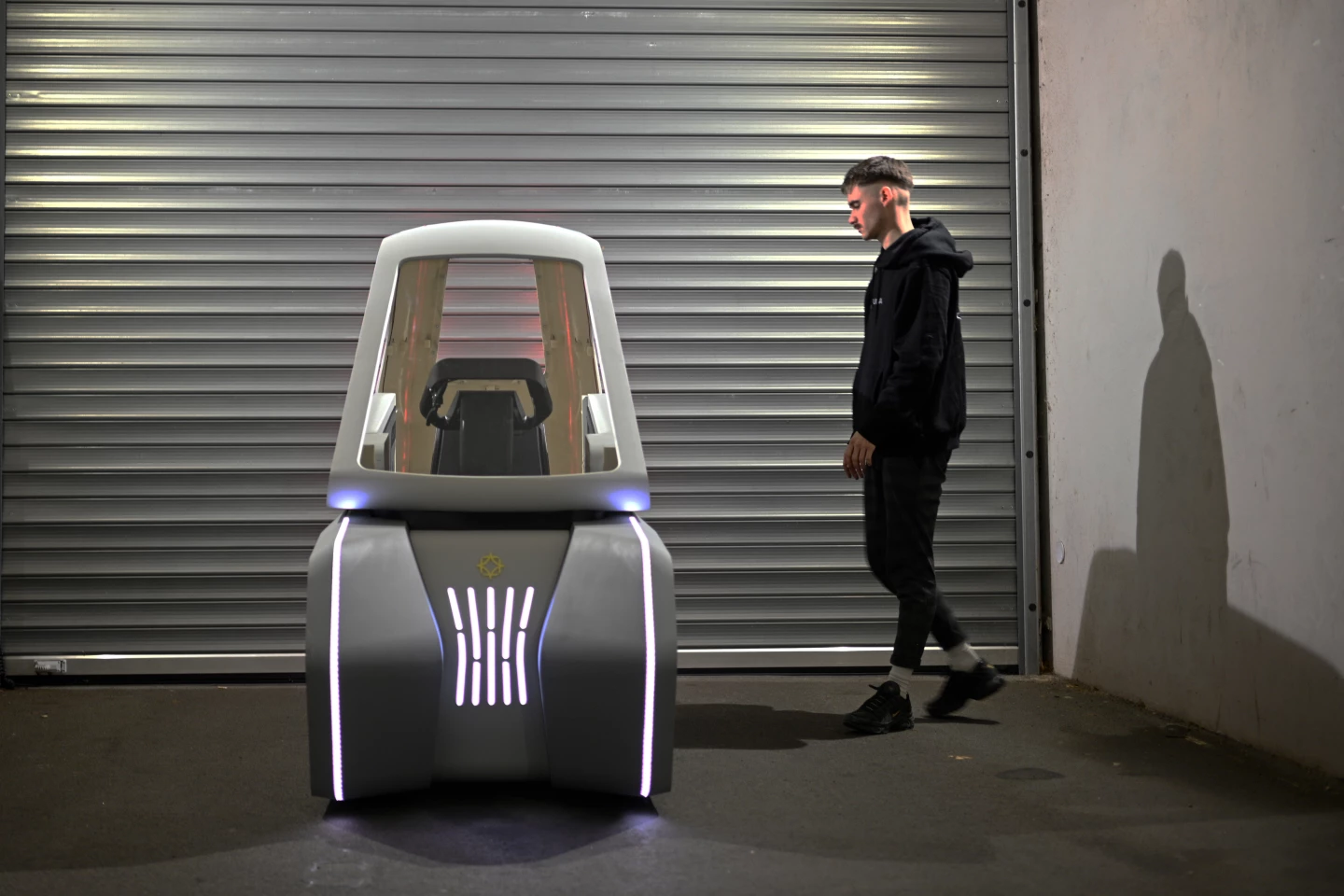An interesting 3D-printed mash up between a cargo ebike and a small electric city car designed by Berlin's nFrontier recently made its public debut at the Formnext 2022 additive manufacturing expo in Frankfurt, at the booth of industry partner Stratasys.
Named UILA, the vehicle has been developed using a Stratasys F770 industrial 3D printer and will move into commercial production using high-volume additive manufacturing technologies such as SAF (powder-based) and P3 (photopolymer-based) machines – which should lower manufacturing costs compared to traditional techniques as well as allow for some customization according to customer preference through a configurator.
Currently at the fully functioning prototype stage of development, the four-wheeler is built around a tubular aluminum frame wearing an outer shell made up of 3D-printed polymer parts. The seats and steering wheel are also 3D printed.
The ebike/microcar measures 2.3 m (7.5 ft) in length, is just 0.9 m (2.9 ft) wide and stands 1.7 m (5.5 ft) tall, while weighing in at just 70 kg (154 lb), which should offer a small footprint in traffic, make it an easy park in tightly packed city centers, and contribute to good maneuverability.

nFrontier says that the UILA seats two comfortably (with the passenger behind the driver), can technically be driven without a license in Germany, and could make use of bike lanes too. Its electric drivetrain features hub motors at the rear and a pedal-operated dynamo to feed the 1,200-Wh battery, which should be good for a per-charge range of between 60 and 70 km (37 - 44 miles).
Top speed is reported to be 25 km/h (15.5 mph), and stopping power comes from hydraulic disc brakes mounted to each of the four 20-inch wheels.
An onboard infotainment system pairs with the driver's smartphone running a companion app. And though details haven't been revealed at this stage, the studio has cooked in an autonomous parking mode, where the user will be able to call the vehicle through the app and it will navigate to the meeting point on its own, and also a feature that allows the UILA to follow the driver without anyone sitting behind the steering wheel.

More than a mere design study, nFrontier has joined with engineering and manufacturing partners to bring the vehicle into series production in Germany from 2024, where it's expected to be classed as an ebike. Estimated pricing is reported to be "significantly below €10,000." The brief video below shows the recent debut at Formnext 2022.
"UILA is our response to some of the most pressing challenges of our time such as climate change and the current energy crisis," said the innovation studio's CEO, Daniel Buening. "UILA is not only radically changing the way we are commuting, but also provides a truly sustainable, game-changing mobility solution. At the same time, it delivers a feature set of digital functions and assets by far exceeding current bicycle industry standard."









